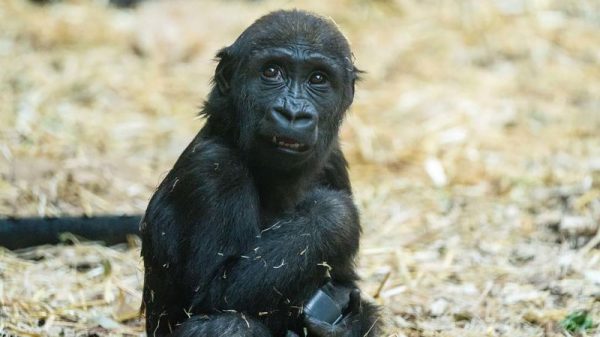The idea of coming face to face with a spider-like creature unexpectedly is enough to fill any arachnophobe with horror, let alone encountering one with large, spiky legs.
But that is exactly what roamed around what’s currently northeast Illinois in the late Carboniferous Period about 300 million to 320 million years ago, according to a study published Friday in the Journal of Paleontology.
The newly discovered long-extinct species is described as a “large spider-like arachnid” with “distinctive large spines on the legs” by the study’s authors. They were unable to place the creature within any known arachnid order due to the specimen’s lack of mouthparts, which scientists use to classify them.
“We looked at it twice and said, ‘What are we looking at here?’”
Expert fossil preparator Bob Masek first discovered the specimen in the 1980s in the fossil deposits preserved at Illinois’ Mazon Creek Lagerstätte. (The German word is a term paleontologists use to describe an exceptional site with many perfectly preserved fossils.) However, it wasn’t until 2023 that it became apparent the specimen was a newfound species and fossil collector David Douglass, who had acquired it from Masek, donated it for research.
Researchers then examined and photographed the fossil using a camera attached to a microscope.
They found that the creature was “evidently something very different from any previously described arachnid,” with spiny legs that resemble some modern harvestmen arachnids but with a different type of body.
The creature likely used its spines for defensive purposes rather than to attack other animals, similar to a hedgehog’s spines today, Dunlop said.
“It means if something tries to bite it, it catches the spines in its mouth. … We talk about handling time, which means if you want to eat something spiny, it takes longer because you’ve got to break the spines off or bite the bits that haven’t got spines on it,” he added.
“We can guess there were scorpions and other spiders around,” Dunlop said, as well as primitive lizardlike animals or large amphibians that would have hunted these arachnids, but it isn’t possible to know for certain.
Without the mouthparts, researchers cannot pinpoint its closest relative, but they hypothesize it could belong to a wider group including spiders, whip spiders and whip scorpions.
Paleontologists have only found this particular species in North America so far, but it could “turn up somewhere else” in Northern Europe too, Dunlop said.
“A huge area across a lot of what’s now Europe and North America was probably a kind of giant tropical rainforest and wherever coal is found today, you’ve got a reasonable chance of finding these fossils (of arachnids, plants and insects),” he added.
Ultimately, researchers named the species Douglassarachne acanthopoda. The genus name honors the Douglass family, who donated the specimen to Chicago’s Field Museum of Natural History, and the species name references the spines that make this arachnid so distinctive.






























